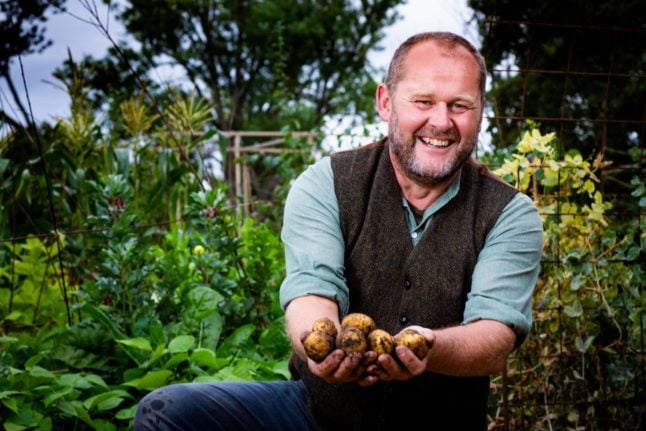Sprigs of dill adorn each of 15 tables; two wine glasses flank two sets of silverware at each place; a cello and violin serenade welcomes guests to a view overlooking Stockholm’s harbour.
Just over a month ago, the space was empty, all but forgotten. But it had been transformed into pop-up restaurant Dill, which opened its doors on September 13th only to serve up its last plates this brisk Thursday evening.
“You usually have six months to build a restaurant,” Anna Högkil, Dill’s project manager, tells The Local. “We had three weeks.”
In recent months, Högkil has worked day and night to find the space and create a fine-dining experience on par with the best eateries in the Swedish capital.
IN PICTURES: Dining at Stockholm’s first ‘pop-up’ restaurant
The cavernous room along Katarinavägen is just minutes from Slussen on the island of Södermalm. It looks like a proper restaurant, if a bit rough around the edges.
According to Högkil, the biggest challenge has been the Saltsjöbanan train, which runs just outside Dill’s arching bay windows.
“It was almost impossible to do,” Högkil explains. “But if we knew it was impossible, we wouldn’t have done it.”
I learned about Dill through a colleague and was immediately intrigued – nine courses from 2-Michelin star, London-based chef Michael Wignall for only 495 kronor ($78)? It sounded too good to be true, especially in Stockholm where dining out at a run-of-the-mill bistro can set you back at least that much.
Turns out, it was.
On Sunday, it was revealed that Dill was actually a PR stunt concocted by low-price Germany-based discount grocery chain Lidl.
SEE ALSO: Stockholm best food city among the Nordic nations
“We simply wanted to demonstrate the quality of our goods,” Lidl spokeswoman Caroline Forshéll told Aftonbladet, the newspaper that unmasked the bluff.
“We think we’ve shown that good food doesn’t need to cost more than it does in our stores.”
The news angered some diners who argued they should have been paid for being unwitting pawns in a marketing stunt for Lidl. Others, however, were simply happy to have tasted a Michelin-class meal for a bargain price.
“People didn’t get what the con was because it was so cheap,” says one of Dill’s chef managers Michael Carter. “We weren’t allowed to tell the big secret.”
Somehow, I had been one of the lucky few to book a table at Dill. That was two weeks ago, however, well before the “pop-up” restaurant was revealed to be a publicity stunt for Lidl.
Maybe we should have been more suspicious. Switch a couple of letters around: Dill = Lidl. Who knew?
As it turns out, only a handful of people within Lidl itself knew of the connection before it came out in the press.
“It’s been a bit different since the exposé,” says Carter. “More people are coming up and talking to us, asking us questions.”
I arrived at Dill with an open mind, willing to give Lidl’s punch line – “Good food doesn’t have to cost more” – a chance. And after nine unique courses, I have to admit I have a somewhat more positive view of Lidl’s food than I had previously.
SEE ALSO: Top ten googled food in Sweden
“[Chef Wignall] visited Lidl here and saw what produce they had,” says Carter. “He made a menu around products they sold that were high enough quality.”
Wignall was in Stockholm supervising Dill’s first two weeks of operation, but had to return to London last week due to a broken knee.
But what a menu he has left behind! Cow’s curd, salmon chips, liquid olives, beetroot emulsion, a parsley sponge. The last course was even topped with smoking apple pie nitrogen rocks.
We were seated with two friendly gentlemen from the company that supplied the liquid nitrogen, one of four ingredients served throughout the evening that didn’t come from Lidl. In my enthusiasm, I think a may have eaten one of these gentlemen’s desserts – so my night ended up including a “perfect ten” courses.
Eating at Dill was not the most impressive culinary experience in taste, but at the end of the day, I’m glad I had the chance to eat there, even if it was all something of a hoax.
The novelty more than made up for the less-memorable dishes; that, and the heavenly, rich chuao chocolate dessert. I don’t know what chuao is, but I may be visiting Lidl shortly to find out.
DON’T MISS: Ten soul-satisfying Swedish comfort foods
Katie Dodd




 Please whitelist us to continue reading.
Please whitelist us to continue reading.
Member comments